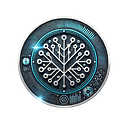The End of Tokenization and the Dawn of a New NLP Era: Byte Latent Transformer
The evolution of Natural Language Processing (NLP) has been defined by milestone advancements, from rule-based systems to deep learning models like GPT and BERT. While these models have set benchmarks for performance, they heavily depend on tokenization, a preprocessing step that transforms raw text into tokens. Tokenization, however, comes with limitations in efficiency, adaptability, and inclusivity.
Enter the Byte Latent Transformer (BLT), an innovative architecture by Meta’s FAIR team. Unlike its predecessors, BLT operates directly on raw bytes, bypassing tokenization entirely. This breakthrough improves efficiency, robustness, and scalability, pushing the boundaries of what NLP can achieve.
The Challenges of Tokenization
Tokenization has been a cornerstone of modern NLP models. It splits text into tokens (words, subwords, or characters) for computational processing. However, this approach introduces several limitations:
1. Domain Sensitivity
Tokenization depends on a predefined vocabulary that may not effectively cover niche or domain-specific languages, such as scientific or legal texts.
2. Sensitivity to Noise
Minor input variations, like typos or misspellings, can disrupt tokenization and degrade model performance.
3. Multilingual Bias
Tokenization often favors languages with Latin scripts, creating inequities for complex or underrepresented languages like Tamil, Hindi, or Amharic.
BLT addresses these issues by directly processing raw bytes, offering a universal, language-agnostic solution.
BLT Architecture: A Paradigm Shift
BLT introduces a byte-level approach where raw text is processed as dynamic patches of bytes instead of static tokens. This architecture adapts computational resources based on the input’s complexity, enabling efficient and scalable NLP. Here’s a closer look at its components:
1. Local Encoder
The Local Encoder processes raw byte sequences into meaningful patch representations. Its key features include:
- Byte n-gram embeddings: Capture sequential relationships between bytes, enabling contextual understanding.
- Cross-attention mechanisms: Dynamically aggregate byte-level information within patch boundaries.
2. Latent Transformer
A global transformer processes these patch representations using:
- Block-causal attention masks: Limit context to relevant patches, reducing unnecessary computation.
- Dynamic patch processing: Allocates more computational power to complex regions (high-entropy) while simplifying predictable ones (low-entropy).
3. Local Decoder
The Local Decoder reconstructs byte sequences from the processed patches, ensuring that output retains fine-grained granularity.
Patching: From Bytes to Efficiency
Patches form the building blocks of BLT. Unlike tokens, patches are dynamic, adapting to the entropy of the input. BLT employs three patching strategies:
Entropy-Based Patching
Entropy-based patching stands out for its adaptability:
- High-entropy segments (e.g., rare characters or complex data) are split into smaller patches for fine-grained processing.
- Low-entropy segments (e.g., repetitive or predictable sequences) are grouped into larger patches to save resources.
Scaling Performance and Robustness
1. BPB Scaling Trends
BLT achieves comparable or better Bits-Per-Byte (BPB) efficiency than token-based models, such as LLaMA 3, while using up to 50% fewer FLOPs (Floating Point Operations Per Second).
2. Robustness to Input Noise
Unlike tokenized models, BLT processes raw bytes directly, making it inherently robust to input perturbations:
- Handles typos, misspellings, and noisy data effortlessly.
- Demonstrates superior accuracy in benchmarks like noisy versions of HellaSwag.
3. Multilingual Translation
BLT excels in low-resource language translation, outperforming tokenized models in FLORES-101 benchmarks:
Experimental Insights
1. Task-Specific Performance
BLT consistently outperforms token-based models in:
- Common Sense Reasoning: Achieves higher accuracy in zero-shot and few-shot tasks.
- Code Generation: Scores higher on HumanEval and MBPP Python benchmarks.
- Translation: Excels in multilingual translation, particularly for low-resource languages.
2. FLOPs Efficiency
By dynamically adjusting patch sizes, BLT reduces computational costs (FLOPs) while maintaining or improving performance.
Real-World Applications
1. Robust Multilingual NLP
BLT’s byte-level granularity democratizes NLP by providing equitable performance across all languages, including those with limited resources.
2. Cost-Effective Training
The dynamic allocation of computational resources reduces costs for training and inference, making BLT accessible to smaller organizations.
3. Improved User Experience
Applications like customer support and content moderation benefit from BLT’s resilience to noisy or inconsistent inputs.
Future Directions
While BLT is a groundbreaking model, there are opportunities for further exploration:
- Hybrid Training: Combine byte-level pretraining with token-based fine-tuning for specific tasks.
- Data Optimization: Curate datasets that maximize the advantages of entropy-based patching.
- Multimodal Applications: Extend BLT’s byte-level approach to handle audio, video, and other data modalities.
Conclusion
The Byte Latent Transformer is a significant leap forward in NLP. By eliminating tokenization, it achieves unparalleled efficiency, robustness, and inclusivity. As the field moves towards more scalable and equitable NLP systems, BLT sets a new standard for the future.
For more details, visit the official repository.
